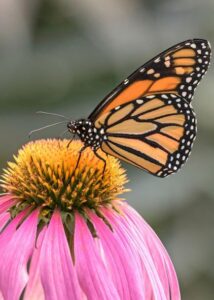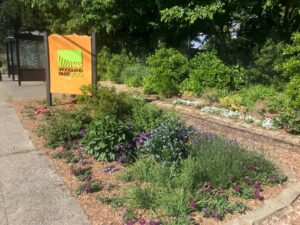
Pollinators, like birds, bees and butterflies, silently provide fresh food, clean air, and a pivotal piece of the world’s economy. Much of life as we know it depends on these small but mighty creatures – and they need our help.
Pollinator populations are declining at an alarming rate due to excessive use of pesticides, habitat loss, and a lack of understanding. Yet, we can all help, even in the city, to recreate healthy, thriving habitats. Some suggestions from the Woodland Park Zoo are:
- Plant native plants, or a bee lawn (click here for more information)
- Fill a hummingbird feeder with water
- Fill a wide, shallow container with pebbles or marbles and water – bees cannot swim so this gives them a place to stand while they drink
- Limit use of pesticides, and plant to attract beneficial insects for pest control
The Woodland Park Zoo created a document (click here) that has more ideas on ways we can all encourage backyard pollinators.

At Woodland Park, check out the Zoo’s two new pollinator gardens, planted just outside the gates so that they are available for the public to enjoy at any time.
- In the raised planter bed next to the South Entrance, near the popular baboon sculptures (in the Hippo Lot), and
- By the METRO bus shelter on Phinney Ave N at N 55th St, south of the Penguin Lot
For more information on how to protect pollinators, see the Zoo’s educational document (click here,) or visit the Zoo from 9:30a – 6p every day. Reserved a timed entry ticket on the Zoo.org/visit webpage.

